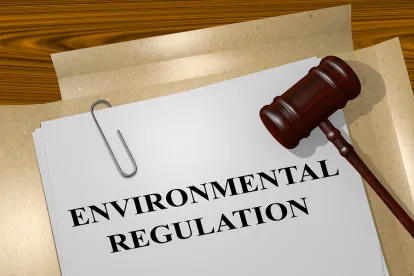On Thursday, May 28, the Treasury Department (Treasury) and the Internal Revenue Service (IRS) issued proposed regulations (REG-112339) for the §45Q, Credit for Carbon Oxide Sequestration, of the Internal Revenue Code (Title 26 of U.S. Code). The proposed regulations provide critical guidance on the meaning of secure geological storage, transferability of the credit, recapturing the credit, and the lifecycle analysis required for the utilization of carbon oxides. On May 19, 2019, the Treasury and IRS issued Notice 2019-32 requesting comments on these critical issues (VNF Alert on Notice 2019-32). This guidance is based on the comments that were submitted in response to that Notice.
The proposed regulations should provide certainty to project developers and investors that their capture projects will qualify for the §45Q tax credit as modified in the Bipartisan Budget Act of 2018 (BBA). The modifications in the BBA were designed to enhance the existing tax incentive for carbon capture, utilization, and storage (CCUS) and promote investment in CCUS technology and the implementation of carbon capture projects at electric generating plants and industrial facilities.
The regulations are proposed to be effective for taxable years beginning after the date the Treasury Decision on the final regulations is published in the Federal Register, although taxpayers may choose to apply the final regulations for taxable years beginning on or after February 9, 2018. Alternatively, before the final regulations are published, taxpayers, who follow the proposed regulations in their entirety and in a consistent manner, may rely on the proposed regulations for taxable years beginning on or after February 9, 2018, and before the date the final regulations are published in the Federal Register.
These proposed regulations address critical issues that were not addressed in IRS Notice 2020-12 and Revenue Procedure 2020-12. The Notice provided guidance on the determination of beginning of construction for an industrial facility with carbon capture and the definition of a single project that includes multiple capture facilities at one or more industrial facilities. The revenue procedure includes safe harbor requirements to provide certainty for tax equity partnerships investing in carbon capture projects.
In issuing these proposed regulations, the Treasury and IRS requested comments on the issues addressed. Those comments will be due 60 days after the date the regulations are formally published in the Federal Register which should be within the next few weeks. In addition, the Treasury and IRS are still accepting comments on the issues raised by Notice 2020-12 and Revenue Procedure 2020-12.
It will be very important for the owners of industrial facilities and power plants; carbon capture technology companies; companies involved in enhanced oil recovery; project developers; and investors to review these proposed regulations and provide comments on issues they believe need to be addressed before these regulations are finalized by the Treasury and IRS. Continued involvement in this process is the only way to ensure that the Treasury and IRS produce the necessary guidance to implement this credit in a way that will promote the development of carbon capture, utilization and storage technology with environmental integrity.
Secure Geologic Storage
The most critical issue for project developers and investors to determine if a project qualifies for the credit is how to fulfill the requirement that carbon oxides be disposed of in secure geologic storage. For carbon oxides stored and not used in EOR, the proposed regulations require the carbon oxides to be stored in compliance with EPA’s Subpart RR requirements and the applicable underground injection control (UIC) program. For carbon oxides stored through injection in an enhanced oil recovery (EOR) project, the carbon oxide must be stored in compliance with either EPA’s Subpart RR rules or the International Organization for Standardization (ISO) Standard as endorsed by the American National Standards Institute (ANSI) and the applicable UIC program. Several commenters had suggested using state reporting rules as an alternative; however the Treasury and IRS declined to allow taxpayers that option.
Recapture
The proposed regulations adopt a recapture period that begins on the date the first qualified carbon oxide (QCO) is injected and ends on the date that is the earlier of five years after the last taxable year in which the taxpayer claimed a section 45Q credit or the date monitoring ends under the secure geologic storage requirements. In addition, the proposed regulations contain a five-year look-back period for releases of previously sequestered carbon oxides that may be recaptured. The proposed regulations do not adopt the safe harbor recommended by many commenters for no recapture when the injection is done in compliance with the applicable standards provided by subpart RR or ISO/ANSI and the UIC program.
Transferability of the Credit
For taxpayers that own the carbon capture equipment and want to make a section 45Q(f)(3)(B) election to transfer the credit to the party that sequesters or uses the captured carbon oxide, the proposed regulations provide the details on the party who makes the election and describe the time and manner for making the election on the Form 8933 that will be revised to provide for the election.
Utilization
The proposed regulations explain how taxpayers may claim a credit under section 45Q(f)(5)(A) for utilizing carbon oxides “for any other purpose for which a commercial market exists.” The taxpayer is to use a lifecycle analysis that is consistent with ISO Standard 14044:2006, “Environmental management – Life Cycle assessment – Requirements and Guidelines” and the Life Cycle Analysis (LCA) report must be performed or verified by an independent third-party. The IRS is specifically soliciting comments on data, models, or other evidence that could enhance the LCA reporting requirement.
Contract Requirements
The proposed regulations provide a framework for the types of contracts, terms, and reporting requirements that taxpayers can use to demonstrate the contractual assurance of the capture and disposal, injection, or use of qualified carbon oxide. Taxpayers are required to contractually ensure the disposal, injection, or utilization of qualified carbon oxide in a binding written contract that includes commercially reasonable terms that provides for enforcement. While the proposed regulations require contracts include a mechanism for enforcement, no specific enforcement-related provision is proposed.
Definition of Key Terms
The proposed regulations provide detailed definitions for the following terms:
-
Qualified carbon oxide.
-
Recycled carbon oxide
-
Carbon capture equipment
-
Industrial facility
-
Electricity generating facility
-
Direct air capture facility
-
Qualified facility
-
§45Q(d)(2)(A) Facility
-
§45Q(d)(2)(B) Facility
-
§45Q(d)(2)(C) Facility
-
Applicable facility
-
Retrofitted qualified facility or carbon capture equipment (80/20 Rule)
-
-
Qualified enhanced oil or natural gas recovery project




 />i
/>i

